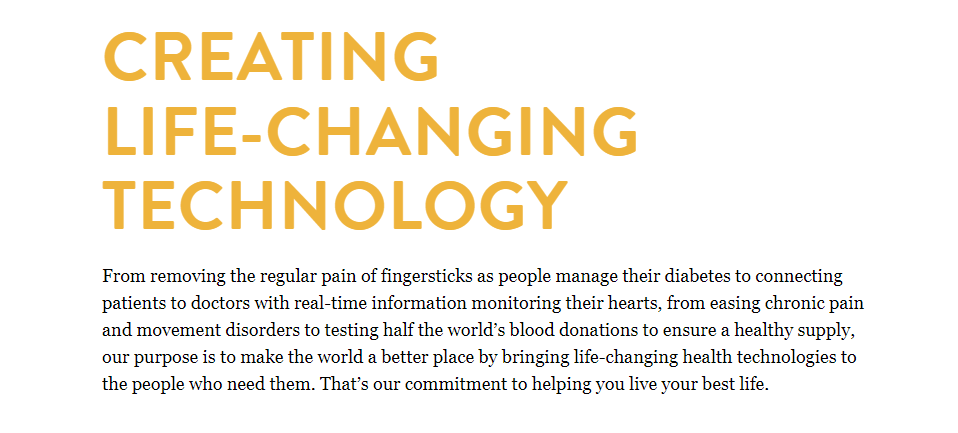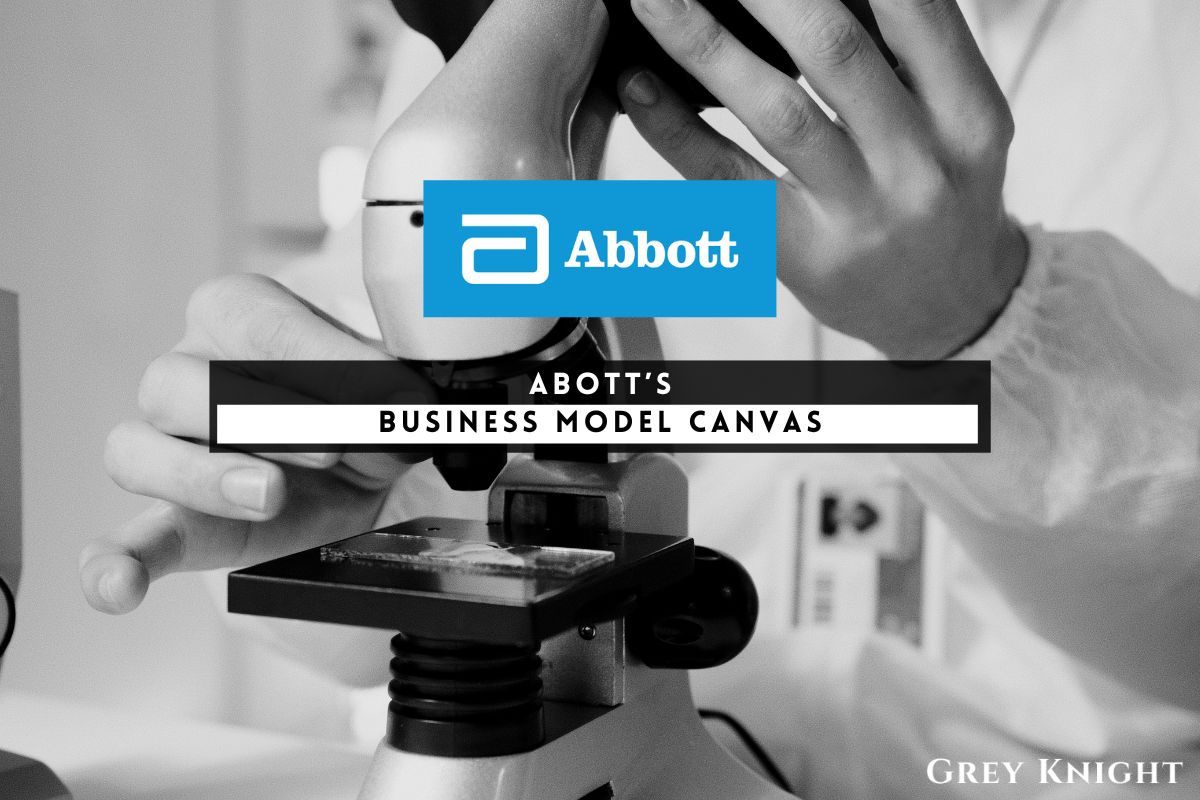Table of Contents
ToggleA Brief History of Abbott
Abbott Laboratories was founded in 1888 by Dr. Wallace C. Abbott in Chicago, Illinois. Dr. Abbott had a vision to create a company that would focus on producing consistent, high-quality medicines to help improve people’s lives. The company initially started as a one-room operation, manufacturing known drug agents, but rapidly expanded to include a wider range of products.
In 1910, Abbott Laboratories was incorporated and became publicly traded on the Chicago Stock Exchange. Throughout the years, Abbott Laboratories has experienced significant growth and success by developing and marketing a wide variety of pharmaceuticals, medical devices, diagnostics, and nutritional products.
The company has also expanded its operations globally and has become one of the leading healthcare companies worldwide. It has acquired multiple companies and created strategic partnerships to further enhance its product offerings and innovation in the medical industry.
Abbott Laboratories has a rich history of innovation, including the development of breakthrough products such as the first HIV blood-screening test, the first FDA-approved rapid influenza diagnostic test, and the invention of the world’s first intravenous solution. Today, Abbott Laboratories continues to be a leader in the healthcare industry, consistently delivering new and innovative solutions to improve people’s health and quality of life.
Who Owns Abbott?
Abbott Laboratories is a publicly traded company, meaning it is owned by shareholders who have bought and own shares of the company’s stock. The largest shareholders are typically institutional investors such as mutual funds, pension funds, and other large investment firms, as well as individual investors who own shares of the company. The top 10 shareholders of Abbott Laboratories as of the most recent filings include Vanguard Group Inc., BlackRock Inc., State Street Corp, T. Rowe Price Associates Inc., Capital World Investors, Wellington Management Co. LLP, Geode Capital Management, LLC, JP Morgan Asset Management, Northern Trust Corporation, and Bank of America Corp. These shareholders collectively own a significant portion of the company’s outstanding shares and have a strong influence on the company’s strategic decisions and corporate governance.
Abbott Mission Statement

Abbott Laboratories is committed to improving people’s health and well-being through the discovery, development, and delivery of innovative healthcare solutions. The company strives to provide high-quality products and services that help people live healthier and more fulfilling lives. Abbott is dedicated to conducting its business with integrity, accountability, and a focus on sustainability, while also making a positive impact on the communities it serves. Their mission is to continuously advance healthcare for generations to come.
How Abbott Makes Money?
Abbott Laboratories operates under a diversified business model that generates revenue through its various segments such as Established Pharmaceuticals, Medical Devices, Nutrition, and Diagnostics. The company makes money by selling a wide range of products including medical devices, diagnostic tools, nutrition products, and generic pharmaceuticals, among others. Abbott also offers a range of services including laboratory testing, research and development, and contract manufacturing. Its revenue stream is derived from sales of these products and services to healthcare providers, hospitals, pharmacies, and consumers globally. Additionally, Abbott also generates revenue through licensing and collaborations with other companies in the healthcare industry.
Abbott Business Model Canvas
The business model canvas is a strategic management tool that provides a visual representation of a company’s business model. It consists of nine key elements that help to identify, analyze, and design the business strategy. These elements include Customer Segments, Value Propositions, Channels, Customer Relationships, Revenue Streams, Key Resources, Key Activities, Key Partners, and Cost Structure.
Customer Segments:
– Healthcare professionals
– Patients
– Government and private hospitals
– Retail pharmacies
– Medical diagnostic laboratories
– Research institutions
Value Propositions:
– High-quality medical devices and pharmaceutical products
– Innovative healthcare solutions
– Reliable diagnostic testing services
– Access to cutting-edge research and development
– Exceptional customer support and training programs
Channels:
– Direct sales force
– Online sales platforms
– Distributors and wholesalers
– Medical and pharmaceutical industry trade shows
– Digital marketing and advertising campaigns
Customer Relationships:
– One-on-one interactions with healthcare professionals
– Personalized patient support programs
– Ongoing communication through email and social media
– Training and educational resources for customers
Revenue Streams:
– Sales of medical devices and pharmaceutical products
– Diagnostic testing and laboratory services
– Licensing and royalties from intellectual property
– Subscription-based revenue from support programs and training
Key Resources:
– Research and development facilities
– Manufacturing plants
– Distribution network
– Intellectual property and patents
– Skilled workforce and talent
Key Activities:
– Research and development
– Manufacturing and production
– Sales and marketing
– Distribution and logistics
– Customer support and training
Key Partners:
– Suppliers of raw materials and components
– Distribution and logistics partners
– Healthcare professionals and organizations
– Research institutions and universities
– Regulatory and compliance agencies
Cost Structure:
– Research and development expenses
– Manufacturing and production costs
– Marketing and advertising expenses
– Sales and distribution costs
– Customer support and training expenses
Abbott’s Competitors
Abbott Laboratories faces competition from several companies in the pharmaceutical and healthcare industry. Some of its top competitors include Johnson & Johnson, Pfizer Inc., Novartis AG, Roche Holding AG, and Merck & Co. These companies also produce a wide range of medical products and medications, competing with Abbott Laboratories in various therapeutic areas and markets. They strive to develop innovative treatments and technologies, expanding their product portfolio and advancing their research and development efforts to remain competitive in the global healthcare market.
Abbott SWOT Analysis
Strengths:
1. Strong portfolio of healthcare products, including pharmaceuticals, medical devices, and nutritional products
2. Global presence with operations in over 150 countries
3. Strong research and development capabilities, leading to innovative product offerings
4. Diverse revenue streams from multiple business segments
Weaknesses:
1. Dependence on a few key products for a significant portion of revenue
2. Vulnerability to changes in healthcare regulations and policies
3. Potential for product recalls and liability risks
4. Limited presence in emerging markets compared to some competitors
Opportunities:
1. Continued expansion into emerging markets to tap into growing healthcare demand
2. Increasing focus on personalized medicine and the development of targeted therapies
3. Potential for strategic partnerships and collaborations to drive growth
4. Growing demand for healthcare solutions and products in an aging population
Threats:
1. Intense competition in the pharmaceutical and healthcare industry
2. Regulatory challenges and changes in healthcare policies
3. Rising costs of research and development
4. Potential impact of economic downturns on consumer spending on healthcare products
Concluding Analysis
In conclusion, Abbott Laboratories has shown a strong and resilient business model, with a focus on innovation and diversification. The company’s strategic acquisitions and partnerships have allowed it to continuously expand its portfolio and reach new markets. As an analyst, I am optimistic about the future of Abbott Laboratories. With its strong foundation and commitment to addressing healthcare needs, I believe the company is well-positioned for continued success and growth in the years to come. Abbott’s ability to adapt to the evolving healthcare landscape and its dedication to improving the quality of life for people around the world make it a promising investment for the future.
Additional Resources
To keep learning and advancing your career, we highly recommend these additional resources:
Business Model Canvas of The Top 1,000 Largest Companies by Market Cap in 2024
A List of 1000 Venture Capital Firms & Investors with LinkedIn Profiles
Peter Thiel and the 16 Unicorns: The Legacy of Thiel Fellowship












